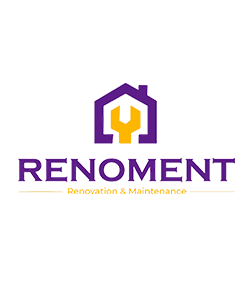Best Siding for House
Selecting the Best siding for your home is a crucial decision that impacts not only the aesthetics but also the durability and maintenance requirements of your property. With numerous options available in the market, it can be overwhelming to determine which siding material is best suited for your needs. To help you make an informed decision, we’ll explore the top siding options according to experts, highlighting their key features, benefits, and considerations.
Vinyl Siding:
Features:
Vinyl siding is a popular choice due to its affordability, versatility, and low maintenance requirements. Best Siding for House is comes in a wide range of colors, textures, and profiles, allowing homeowners to achieve their desired look.
Benefits:
Vinyl siding is durable, resistant to rot, insects, and moisture, making it ideal for various climates. It is also relatively easy to install and requires minimal upkeep, such as occasional cleaning with soap and water.
Considerations:
While vinyl siding is a cost-effective option, it may not offer the same level of insulation as other materials. Additionally, extreme temperatures can cause vinyl siding to expand Best Siding for House or contract, potentially leading to warping or damage.
Fiber Cement Siding:
Features:
Fiber cement siding is composed of cement, sand, and cellulose fibers, resulting in a durable and fire-resistant material. It can mimic the look of wood, brick, or stucco, offering versatility in design.
Benefits:
Fiber cement siding is highly durable, resistant to rot, pests, and weather damage. It requires minimal maintenance and can last for several decades with proper care. Additionally, it provides excellent insulation and is resistant to fire, making it a safe choice for homeowners.
Considerations:
Fiber cement siding is heavier than other materials and may require professional installation. It can also be more expensive upfront compared to vinyl or wood siding options.
Wood Siding:
Features:
Wood siding offers a timeless and natural aesthetic that many homeowners appreciate. Cedar, redwood, and pine are popular choices due to their durability and resistance to decay.
Benefits:
Wood siding provides excellent insulation properties, helping to regulate indoor temperatures and reduce energy costs. It can be painted or stained to achieve various looks and can last for decades with proper maintenance.
Considerations:
Wood siding requires regular upkeep, including staining or painting every few years to prevent rot and deterioration. It is also susceptible to insect damage and moisture, especially in humid climates.
Engineered Wood Siding:
Features:
Engineered wood siding is made from wood fibers and resin, resulting in a durable and moisture-resistant material. It offers the aesthetic appeal of natural wood with less maintenance.
Benefits:
Engineered wood siding is Best Siding for House more affordable than natural wood and requires minimal upkeep. It is resistant to rot, pests, and moisture, making it a long-lasting option for homeowners.
Considerations:
While engineered wood siding is more durable than natural wood, it may still require occasional maintenance, such as painting or caulking. It is also susceptible to damage from extreme weather conditions.
Metal Siding:
Features:
Metal siding, such as aluminum or steel, offers a modern and sleek aesthetic that complements contemporary architectural styles. It is highly durable and resistant to fire, insects, and weather damage.
Benefits:
Metal siding is low maintenance and can last for several decades without needing replacement. It is also energy-efficient and reflects heat, helping to reduce cooling costs in warmer climates.
Considerations:
Metal siding may be more expensive upfront compared to other materials, and it can dent or scratch easily if not properly installed. Additionally, it may not be suitable for homes in areas with high humidity or salt exposure.
Brick Siding:
Features:
Brick siding offers timeless appeal and durability, making it a popular choice for traditional and historic homes. It is resistant to fire, pests, and weather damage, providing long-lasting protection.
Benefits:
Brick siding requires minimal maintenance and can last for generations without needing replacement. It provides excellent insulation properties, helping to regulate indoor temperatures and reduce energy costs.
Considerations:
Brick siding is more expensive than other options and may require professional installation. Best Siding for House is also heavy and may require additional structural support, especially for existing homes.
In conclusion, the Best Siding for House depends on various factors, including your budget, aesthetic preferences, climate, and maintenance requirements. Consulting with siding experts or contractors can help you evaluate your options and make an informed decision based on your specific needs. Whether you choose vinyl, fiber cement, wood, engineered wood, metal, or brick siding, investing in quality materials and professional installation can enhance the beauty, durability, and value of Best Siding for House your home for years to come.

